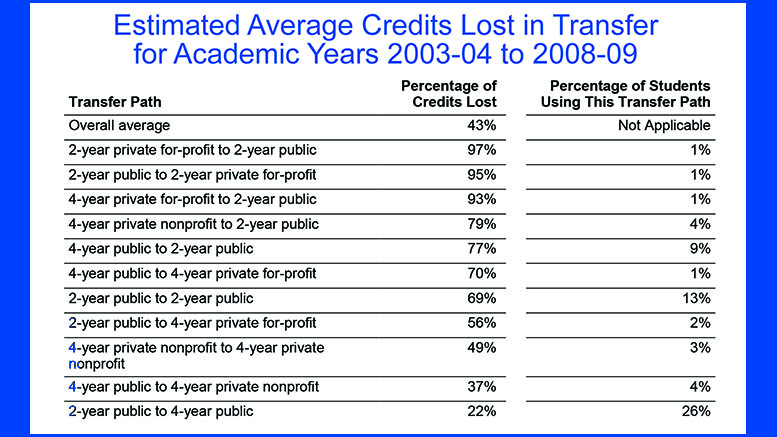
Can you transfer graduate credits? This question arises for many students seeking to streamline their academic journey or explore new educational paths. Transferring graduate credits can save time and money, but it’s essential to understand the complexities involved.
The transferability of graduate credits hinges on various factors, including the receiving institution’s policies, the alignment of course content and learning outcomes, and the student’s academic history. Navigating the credit transfer process requires careful planning and a thorough understanding of the rules and regulations governing credit transfer.
Understanding Graduate Credit Transfer
Transferring graduate credits is a common practice for students seeking to streamline their academic journey and potentially save time and money. This process involves moving previously earned credits from one institution to another, allowing them to be applied towards a new degree program.
Reasons for Graduate Credit Transfer
Students often seek to transfer graduate credits for various reasons:
- Continuing Education: Students may want to continue their studies in a related field, using credits from a previous program to build upon their existing knowledge.
- Changing Career Paths: Individuals may decide to pursue a different career path and need to transfer credits from a previous program to fulfill the requirements of a new degree.
- Cost Savings: Transferring credits can help students save money by avoiding the need to retake courses they have already completed.
- Time Efficiency: Transferring credits can shorten the time it takes to complete a degree program, allowing students to graduate sooner.
Benefits of Graduate Credit Transfer
Transferring graduate credits can offer several advantages to students:
- Reduced Coursework: Transferring credits can allow students to reduce the number of courses they need to take to complete their degree.
- Faster Graduation: By transferring credits, students can potentially graduate earlier than they would have otherwise.
- Financial Savings: Transferring credits can help students save money on tuition and other academic expenses.
- Increased Flexibility: Transferring credits can provide students with more flexibility in their academic planning and allow them to pursue a degree that aligns with their evolving career goals.
Factors Affecting Credit Transfer

The transferability of graduate credits is not a straightforward process and is influenced by a variety of factors. Understanding these factors is crucial for students seeking to transfer credits and ensure their academic progress.
Receiving Institution’s Policies
The primary factor determining credit transfer is the policies of the receiving institution. Each institution has its own set of guidelines and criteria for evaluating and accepting transfer credits. These policies can vary significantly across institutions, even within the same state or field of study.
- Credit Acceptance Policies: Institutions may have specific policies regarding the types of credits they accept, such as those earned from accredited institutions, specific course formats (e.g., online vs. in-person), or specific subject areas.
- Course Equivalency: The receiving institution will evaluate the transferred courses against its own curriculum to determine if they are equivalent in terms of content, learning outcomes, and level of rigor. A course might be accepted for transfer but may not be directly equivalent to a specific course at the receiving institution, potentially affecting course sequencing and degree requirements.
- Credit Limits: Institutions may set limits on the number of transfer credits they accept, particularly for graduate programs. These limits may vary based on the program’s specific requirements and the student’s overall academic background.
Course Content and Learning Outcomes Alignment, Can you transfer graduate credits
Beyond institutional policies, the alignment of course content and learning outcomes plays a critical role in credit transfer. The receiving institution will assess whether the transferred courses cover similar material and demonstrate comparable learning objectives to its own courses.
- Course Syllabi and Descriptions: The receiving institution will review course syllabi and descriptions to compare the content and learning outcomes of the transferred courses with its own curriculum. The emphasis is on ensuring that the transferred courses provide comparable knowledge and skills to those required for the receiving institution’s degree program.
- Learning Outcomes Assessment: The receiving institution may also consider how learning outcomes are assessed in the transferred courses. This might include evaluating assignments, exams, projects, or other methods used to measure student learning. The assessment methods should be comparable to those used in the receiving institution’s courses.
- Course Level and Rigor: The receiving institution will evaluate the level and rigor of the transferred courses. A course taken at a lower level or with less demanding content may not be accepted for transfer at the graduate level. The receiving institution will consider the overall academic standing of the previous institution and the reputation of the program where the courses were taken.
The Credit Transfer Process
The process of transferring graduate credits from one institution to another involves a series of steps that ensure the transferability of your previous coursework. This process typically involves an evaluation of your previous credits and a determination of their equivalence to the receiving institution’s courses.
Steps Involved in the Credit Transfer Process
The credit transfer process is generally structured in a series of steps, starting with the initial request and culminating in the final credit allocation.
- Initiate the Request: Begin by contacting the graduate program at the receiving institution to inquire about their credit transfer policies. You can usually find this information on their website or by contacting the admissions office.
- Gather Necessary Documentation: You will need to provide official transcripts from the institution where you earned your previous credits. This should include a complete academic record, showing the courses taken, grades received, and degree awarded.
- Submit the Request: Submit your credit transfer request along with the required documentation to the receiving institution. This is usually done through an online portal or by mail.
- Credit Evaluation: The receiving institution will review your transcripts and evaluate your previous credits to determine their equivalency to their own courses.
- Credit Transfer Decision: Based on the evaluation, the receiving institution will make a decision on which credits will be transferred and how many credits will be accepted.
- Credit Allocation: If your credits are accepted, they will be allocated to specific courses in your new program of study.
Flowchart Illustrating Key Stages
The credit transfer process can be visualized as a flowchart, highlighting the key stages involved.
[Image of flowchart describing the credit transfer process, showing the steps from initiation to credit allocation.]
Required Documentation for Credit Transfer Requests
The specific documentation required for credit transfer requests may vary depending on the receiving institution. However, some common documents include:
| Document | Description |
|---|---|
| Official Transcripts | Academic records from the institution where you earned your previous credits, showing courses taken, grades received, and degree awarded. |
| Course Descriptions | Detailed descriptions of the courses you took, including learning objectives, course content, and assessment methods. |
| Syllabus | A copy of the syllabus for each course you wish to transfer, if available. |
| Degree Certificate | A copy of your degree certificate from the institution where you earned your previous credits. |
| Transfer Credit Application Form | A form provided by the receiving institution for you to submit your request for credit transfer. |
Resources for Credit Transfer Information: Can You Transfer Graduate Credits
Navigating the complex world of graduate credit transfer requires access to reliable and comprehensive information. Understanding the policies, procedures, and factors influencing credit transfer is crucial for students seeking to maximize their academic investments. This section provides a roadmap to essential resources that can guide you through the credit transfer process.
University Catalogs and Websites
University catalogs and websites are the primary sources for information about graduate credit transfer policies. These resources contain detailed information about:
- Credit transfer policies and procedures
- Acceptable course types and subject areas
- Minimum grade requirements for transfer
- Deadlines and application processes
For instance, the University of California, Berkeley Graduate Division website Artikels its credit transfer policy, specifying that graduate courses taken at accredited institutions are eligible for transfer, with a minimum grade requirement of B or equivalent.
Online Credit Transfer Databases
Several online databases offer valuable resources for researching credit transfer policies and procedures across various institutions. These databases often include:
- Searchable directories of graduate programs
- Information on course equivalencies and transferability
- Credit transfer policies and procedures
For example, the Transferology website provides a comprehensive database that allows students to search for course equivalencies between different institutions. By entering their previous coursework, students can determine which courses are likely to transfer to their desired graduate program.
Professional Organizations and Associations
Professional organizations and associations in specific fields often provide guidance and resources related to credit transfer for their members. These organizations may offer:
- Information on industry-specific accreditation requirements
- Resources for navigating credit transfer policies at different institutions
- Networking opportunities with professionals in the field
For example, the American Psychological Association (APA) provides resources for psychologists seeking to transfer graduate credits earned at different institutions. The APA website includes information on credit transfer policies, accreditation requirements, and professional development opportunities.
Contact Information for Relevant Departments
Direct communication with relevant departments at institutions is essential for obtaining specific and up-to-date information about credit transfer policies.
- Graduate Admissions Office: This office handles the overall admission process and can provide information about credit transfer policies and procedures.
- Registrar’s Office: This office manages academic records and can assist with evaluating transfer credits.
- Department of Study: The department responsible for your desired graduate program can provide specific information about course equivalencies and transferability.
For instance, students interested in transferring graduate credits to the University of Michigan’s School of Education should contact the Graduate Admissions Office for general information, the Registrar’s Office for credit evaluation, and the specific department for program-specific details.
Case Studies

Real-world examples can illustrate the process of transferring graduate credits. These case studies showcase successful scenarios, highlighting the factors that contributed to their success. By examining these examples, you can gain insights into the complexities of credit transfer and understand the strategies that can lead to a successful outcome.
Successful Credit Transfer Scenarios
These case studies highlight various successful credit transfer scenarios. Each scenario showcases a different aspect of the credit transfer process, emphasizing the factors that contribute to success.
- Case 1: Transferring Credits from a Different Institution: A student pursuing a Master’s degree in Business Administration (MBA) at a university in the United States successfully transferred 9 credits from a previous Master’s program in International Business at a university in Canada. The student’s previous program aligned well with the MBA program’s curriculum, and the courses were taught at a comparable level. The student submitted official transcripts, course descriptions, and a course equivalency request to the university. The university reviewed the documents and determined that the credits were transferable, saving the student time and money on their MBA program.
- Case 2: Transferring Credits from a Different Program: A student pursuing a Master’s degree in Education at a university in the United Kingdom successfully transferred 6 credits from a previous Master’s program in Psychology at a university in Australia. The student’s previous program included courses in educational psychology and research methods, which were relevant to the Education program. The student submitted official transcripts, course descriptions, and a course equivalency request to the university. The university reviewed the documents and determined that the credits were transferable, allowing the student to focus on courses specific to their chosen field.
- Case 3: Transferring Credits from a Professional Certification Program: A student pursuing a Master’s degree in Information Technology at a university in India successfully transferred 3 credits from a professional certification program in cybersecurity. The student’s certification program covered topics relevant to the Master’s program, such as network security and ethical hacking. The student submitted official certification documents and a course equivalency request to the university. The university reviewed the documents and determined that the credits were transferable, recognizing the student’s prior learning and expertise.
Factors Contributing to Successful Transfer
The following factors significantly contribute to the successful transfer of graduate credits:
- Course Alignment: The courses taken previously should align with the curriculum of the new program. The courses should cover similar topics and learning objectives. For instance, a course in “Advanced Marketing” from a previous program could be transferable to a Master’s program in Business Administration if the program includes a marketing specialization.
- Course Level: The courses taken previously should be at a comparable level to the courses in the new program. For example, a graduate-level course in “Financial Accounting” from a previous program could be transferable to a Master’s program in Finance, but a similar undergraduate-level course may not be transferable.
- Institution Reputation: The institution where the previous courses were taken should have a good reputation. The new institution may be more likely to accept credits from a highly respected institution.
- Clear Documentation: Providing clear and comprehensive documentation is crucial. This includes official transcripts, course descriptions, and a course equivalency request. The documentation should clearly demonstrate the relevance and equivalence of the previous courses to the new program.
- Proactive Communication: Students should proactively communicate with the new institution’s admissions office or academic advisor. This ensures they understand the institution’s credit transfer policies and procedures. They should also inquire about the process for submitting documentation and requesting course equivalency evaluations.
Insights from Students
Students who have successfully transferred credits often share valuable insights:
“I was surprised by how easy it was to transfer my credits. I had taken a few courses related to my new program in a previous program, and the university accepted them without any issues. It saved me a lot of time and money.” – Sarah, a student pursuing a Master’s degree in Education.
“I highly recommend reaching out to the admissions office early on in the process. They were incredibly helpful in guiding me through the credit transfer process and answering all my questions.” – John, a student pursuing a Master’s degree in Engineering.
“The key to successful credit transfer is to ensure your previous courses align with the curriculum of your new program. It’s also important to have all the necessary documentation readily available.” – Maria, a student pursuing a Master’s degree in Business Administration.
Conclusion

Transferring graduate credits can be a valuable strategy for students looking to maximize their academic progress. However, it’s crucial to approach the process with careful consideration, ensuring that the credits you seek to transfer align with the receiving institution’s requirements and that you meet all necessary documentation and deadlines. By understanding the intricacies of credit transfer and taking the necessary steps to ensure a smooth transition, you can leverage this opportunity to enhance your educational journey.
FAQ Summary
What is the typical time frame for credit transfer evaluations?
The time frame for credit transfer evaluations can vary depending on the institution. It may take several weeks or even months to receive a decision. It’s best to contact the receiving institution directly for specific timeframes.
Can I transfer credits from an online program to a traditional brick-and-mortar program?
Yes, it’s possible to transfer credits from an online program to a traditional program, but it depends on the institution’s policies and the specific courses you wish to transfer. Some institutions may have stricter policies for online courses.
Are there any fees associated with the credit transfer process?
Yes, many institutions charge a fee for processing credit transfer requests. The fee amount can vary depending on the institution. Be sure to check with the receiving institution for their specific fees.
Can I transfer credits from a non-accredited institution?
It’s generally difficult to transfer credits from non-accredited institutions. Accredited institutions typically only accept credits from other accredited institutions. However, you may be able to request a course-by-course evaluation to determine if any credits can be applied.

